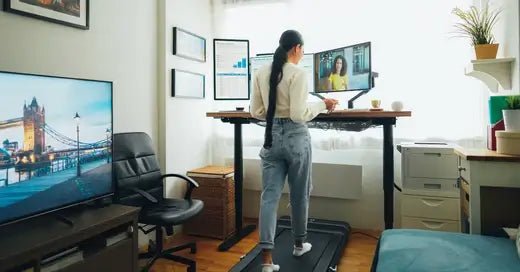
Improve Life Expectancy with Standing Desks
Do you sit for more than six hours a day? You should know that your sedentary work environment is wheeling you and your office chair to an early grave.
Due to the increasing number of corporation employees experiencing health problems caused by an improper workstation, workforce health has become a targeted topic of discussion over the last few years. A study has emerged recently that link standing desks to a positive health boost among individuals with an office job.
The ill-effects of sitting for long hours
According to some studies, employees who sit for six hours a day are 54 percent more likely to die from a heart attack than people who had jobs that did not require them to sit for long hours.
According to a ground-breaking study by the American Cancer Society, women who sat more than six hours a day were 37 percent more likely to die prematurely than women who sat for three hours a day. The mortality rate was 18 percent higher with men who sat for six hours a day or more.
Think again If you feel that you don't fall into this category because you head to the gym after sitting at your desk all day. No matter how strenuous that exercise may be - a couple of hours of exercise a week can not compensate extended sitting sessions.

Sit Stand Desks increase Life Expectancy
The introduction of height adjustable desks is a cost-effective way for employers to improve the health of their employees. Spending excessive amounts of time sitting is associated with serious diseases such as obesity, type 2 diabetes and heart disease, thus becoming a factor in reduced life expectancy.
Sit Stand Desks also have the potential to reduce absenteeism and improve productivity. The introduction of sit-stand desks, alongside associated supports, is a cost-effective and innovative way to promote the health of workforce.
Office workers who use standing desks are less likely to be obese, not only because standing burns 50 calories more every hour, but also because sedentary muscles release lower levels of lipoprotein lipase in the human body.
It's important to note that people who use standing desks are also at a lower risk of developing Type 2 diabetes. A study has shown people that who sit for longer periods have significantly higher levels of fasting blood glucose because their cells have became less responsive to insulin.
For people already at risk of developing Type 2 diabetes, the number of hours a day they spent sitting is a far better indicator of risk than how much exercise they do. Thus exercise is less effective at warding off Type 2 diabetes than using a standing desk.
Being very cost-effective, this intervention has the potential to make a very significant and sustainable positive impact on reducing workplace sitting time ultimately.
Although it has taken some time for a noticeable improvement to be seen within the regular office workspace, now with standing desks becoming highly popular, it seems more people are embracing the concept of active workstations and have started to adopt this office change.
People who understand the positive impact of a standing desk could have on their health and general state of well-being, and decide to incorporate one in their workplace setting, should also try to make the most of it and engage in a few simple exercises daily. Start with the ideas mentioned above and see yourself become healthier every day with the use of standing desks.
